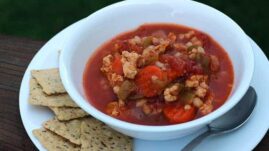This post may contain affiliate links. Please read our disclosure.
This garden fresh vegetable soup is a great way to use up your produce. Simply combine the ingredients in one pot and simmer to bring out the flavors!
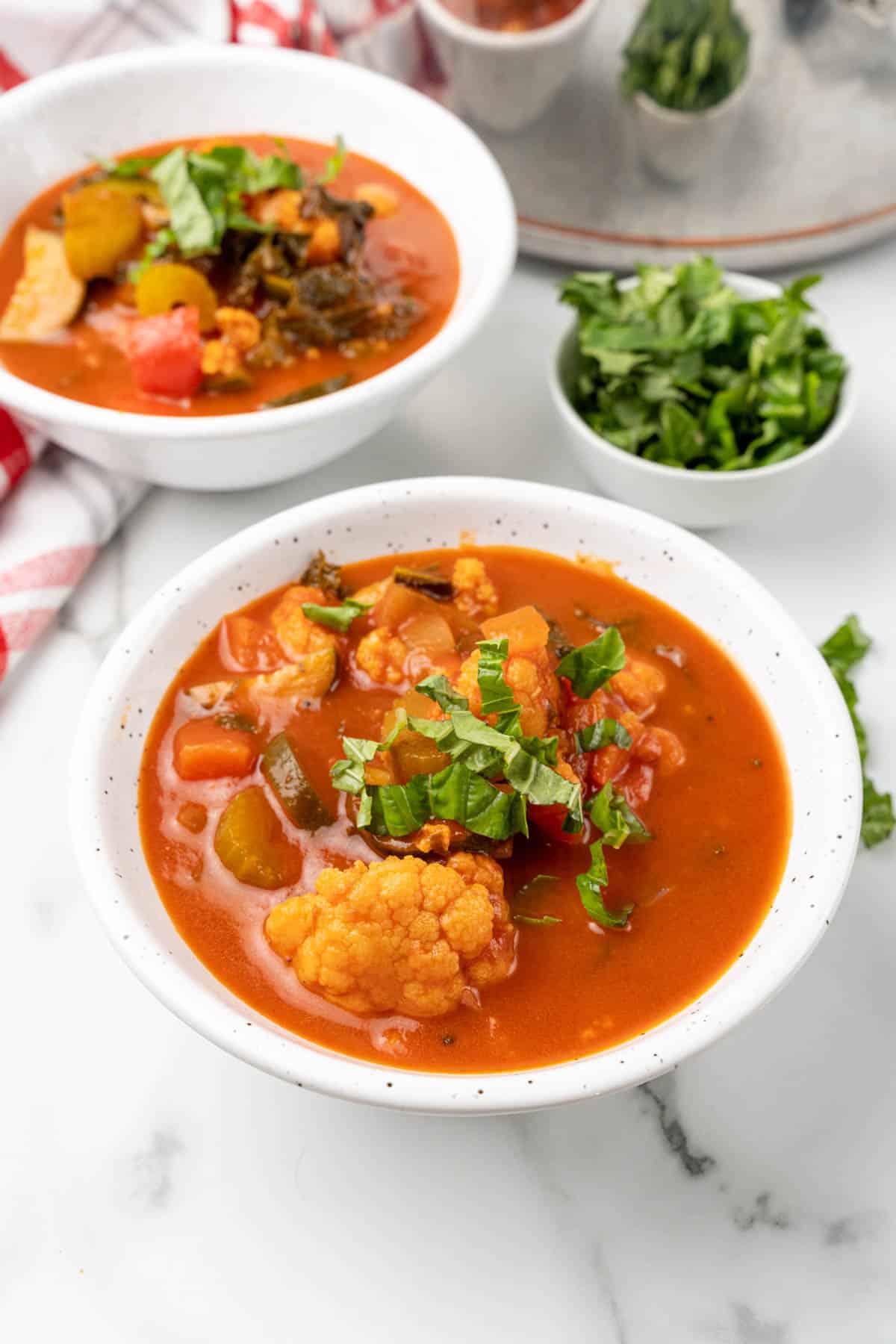
Do you ever find yourself craving soup when it’s hot out? Maybe it’s because I get so many great vegetables from summer farmers’ markets, but a big bowl of garden fresh vegetable soup was the perfect solution!
This warm tomato-based soup is loaded with vegetables and comes together in one pot on the stove. How do you beat that?
And the recipe is very flexible! If you have some different vegetables on hand, you can use this recipe as a guide to whip up a delicious dish with your produce.
So no matter what season it is, whether it’s scorching or freezing outside, I can tell you right now that there is never a bad time for tomato veggie soup!
How to make garden fresh vegetable soup
Ready to see how easily this soup comes together?
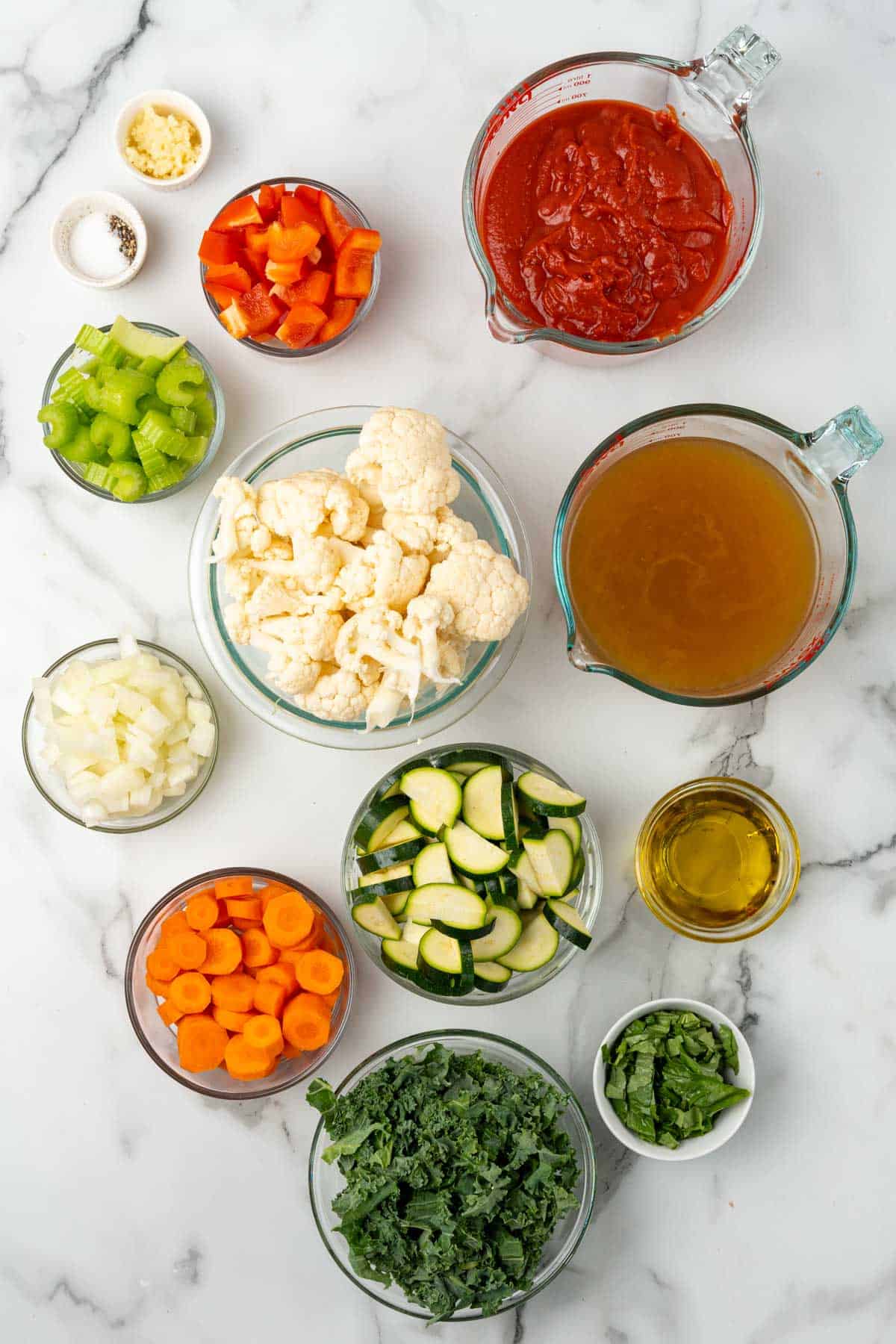
Step 1: Heat the oil in a large pot over medium-high heat.
Step 2: Once the oil is hot, add the onion, garlic, and celery. Cook, stirring occasionally, until the onions begin to look translucent, about 5 minutes. Add salt and garlic pepper, then stir.
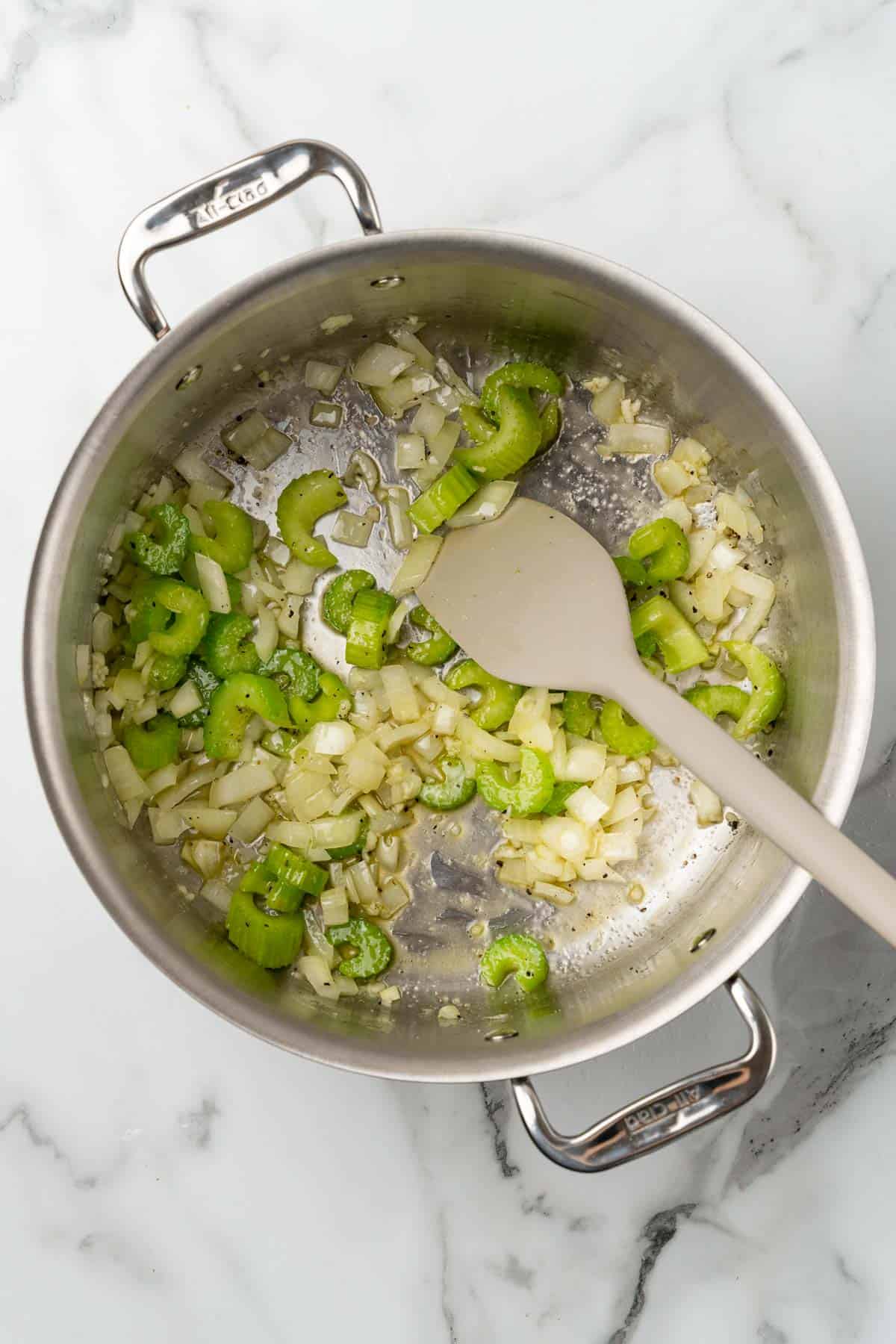
Step 3: Add the tomatoes and stock. Stir to incorporate well.

Step 4: Add the cauliflower and carrots, bring the mixture to a boil, then reduce the heat and simmer for about 15 minutes, stirring occasionally.
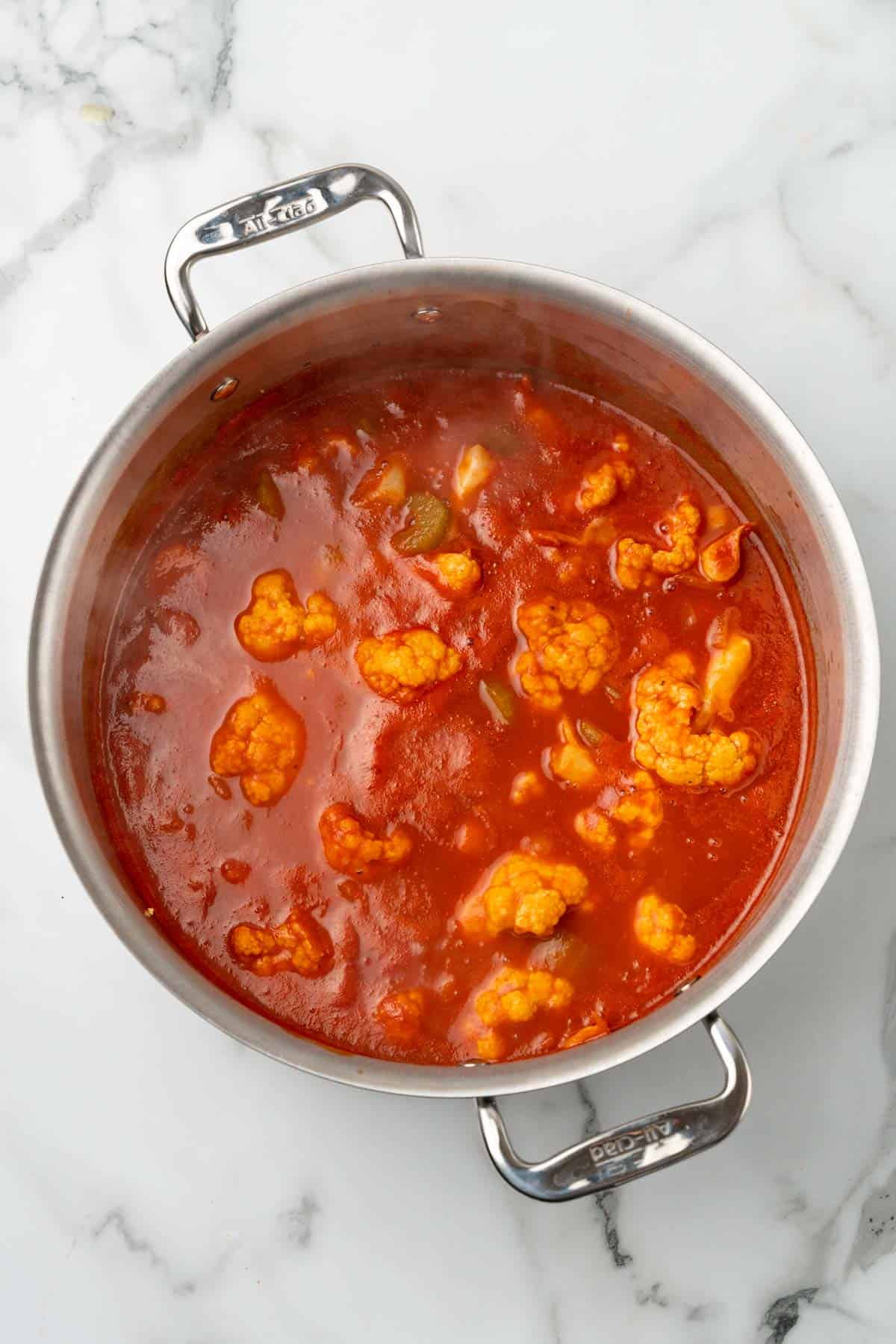
Step 5: Add the bell pepper, squash, and kale. Bring the mixture back to a boil, reduce the heat, and simmer for another 10 minutes, stirring occasionally.
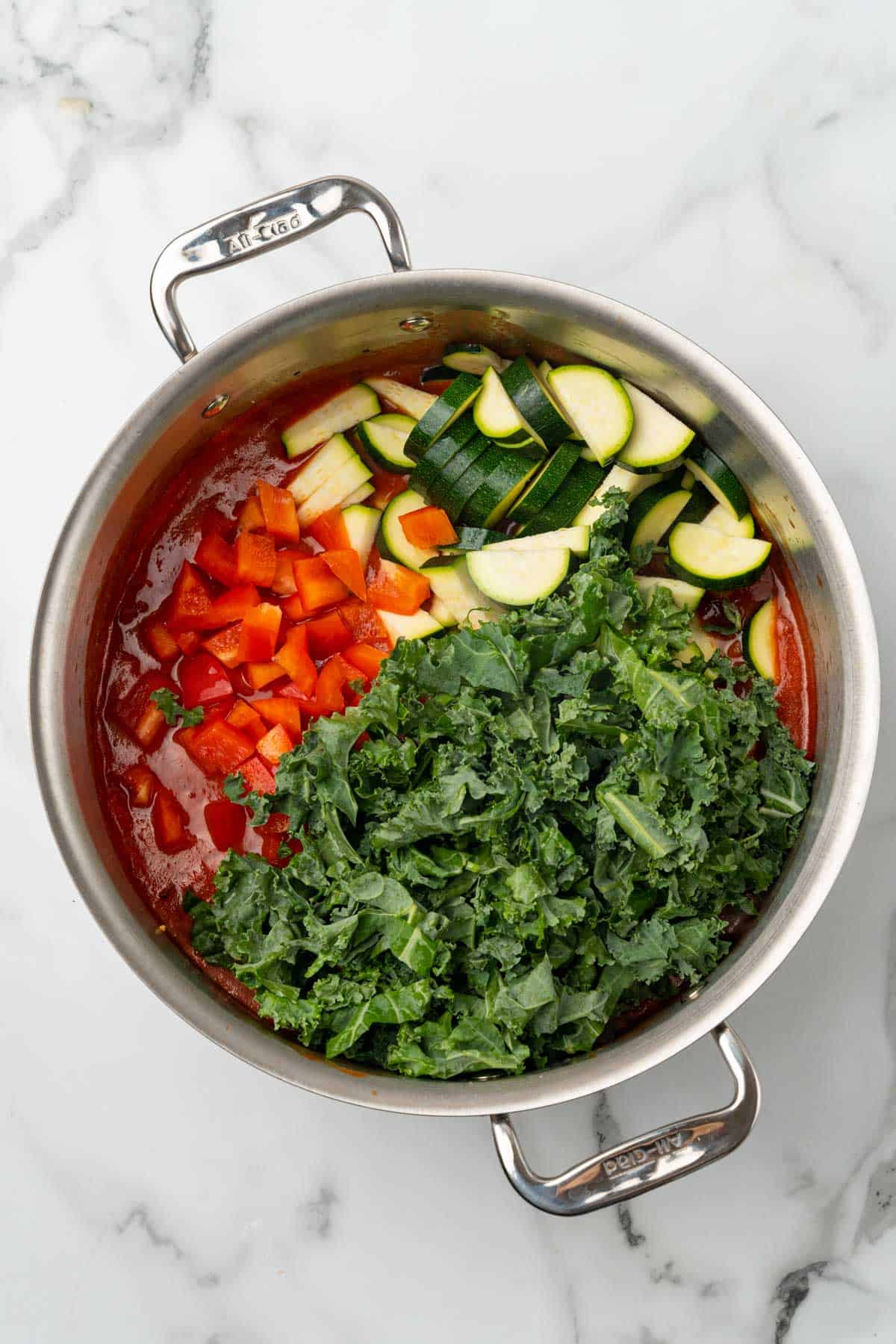
Step 6: Cook until the vegetables are as soft as you like them, then spoon the soup into four bowls and garnish with fresh basil.
That’s it! All you need is one pot and your veggies, and you have yourself a delicious meal.
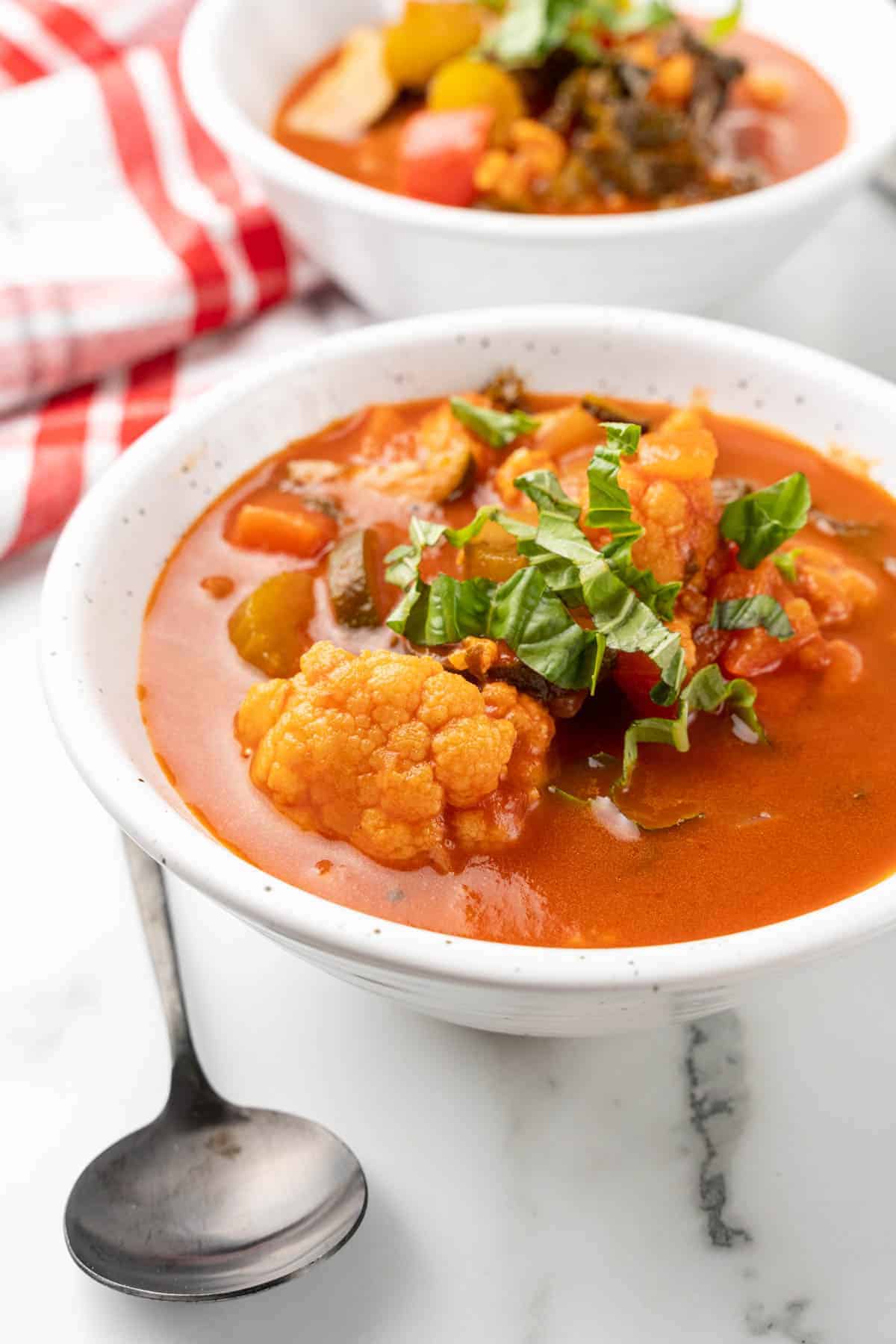
Choosing ingredients for this soup
As I mentioned, this recipe is quite flexible. In fact, it follows a very general soup-making technique, which means you can easily substitute your desired ingredients.
The process for a simple soup is:
- Sauté aromatic vegetables like onions, garlic, and celery in olive oil for 5 minutes.
- Add seasonings like salt and pepper and stir.
- Add crushed tomatoes and stock.
- Add firm vegetables such as carrots, cauliflower, broccoli, and/or root vegetables. Simmer for 15 minutes.
- Add softer vegetables such as yellow squash, zucchini, bell peppers, string beans, and leafy greens. Simmer for 10 minutes.
- Garnish with fresh herbs.
So if you want to add ingredients like peas, corn, or drained and rinsed canned beans, throw them in with the softer vegetables.
Or, if you want to add some sweet potatoes, chop them up and add them with the firmer vegetables.
The possibilities are endless!
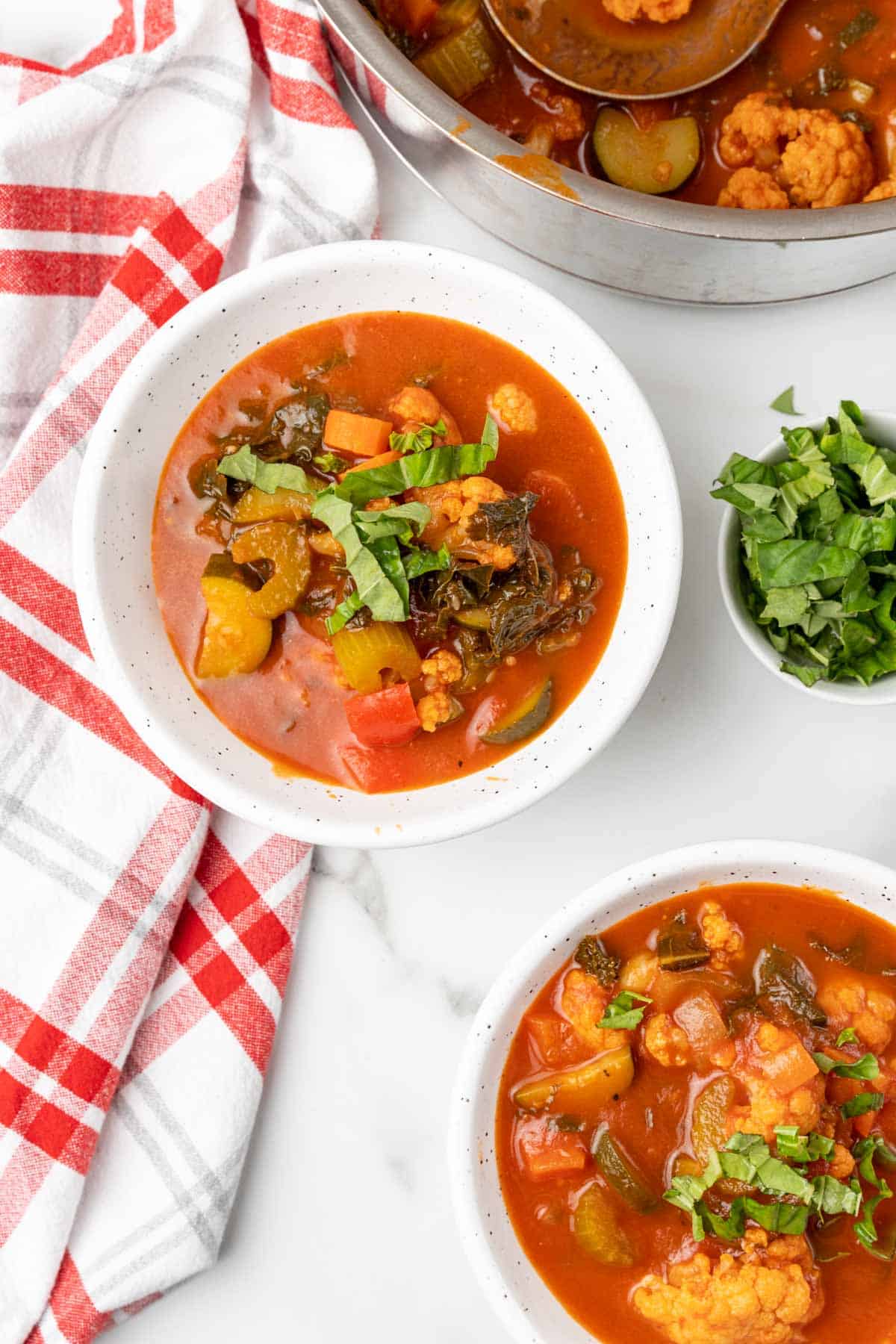
Variations for this recipe
When cooking this soup, you can control the texture of the vegetables based on your preferences.
I like my vegetables to be on the crunchy side, but if you prefer yours to be softer, cook each stage for 5 or 10 minutes more than indicated.
If you’re watching your sodium, reduce or omit the Kosher salt. You can also use low-sodium or homemade stock and fresh peeled tomatoes.
For a thinner soup, simply add more stock.
Feel free to customize this recipe to your preferences!

What to eat with vegetable tomato soup
This dish is full of warm, comforting flavors that are easy to complement any side.
I like to enjoy mine with low-carb parmesan crisps instead of crackers for a healthy lunch. Or, if you enjoy rice with your soup, you could make a batch of low-carb cauliflower rice to soak up all the flavors!
Or, for something a little crunchy, try these roasted Italian herbed nuts or crispy roasted chickpeas with parmesan.
There are so many options to go with your tasty, nutritious, satisfying veggie soup!
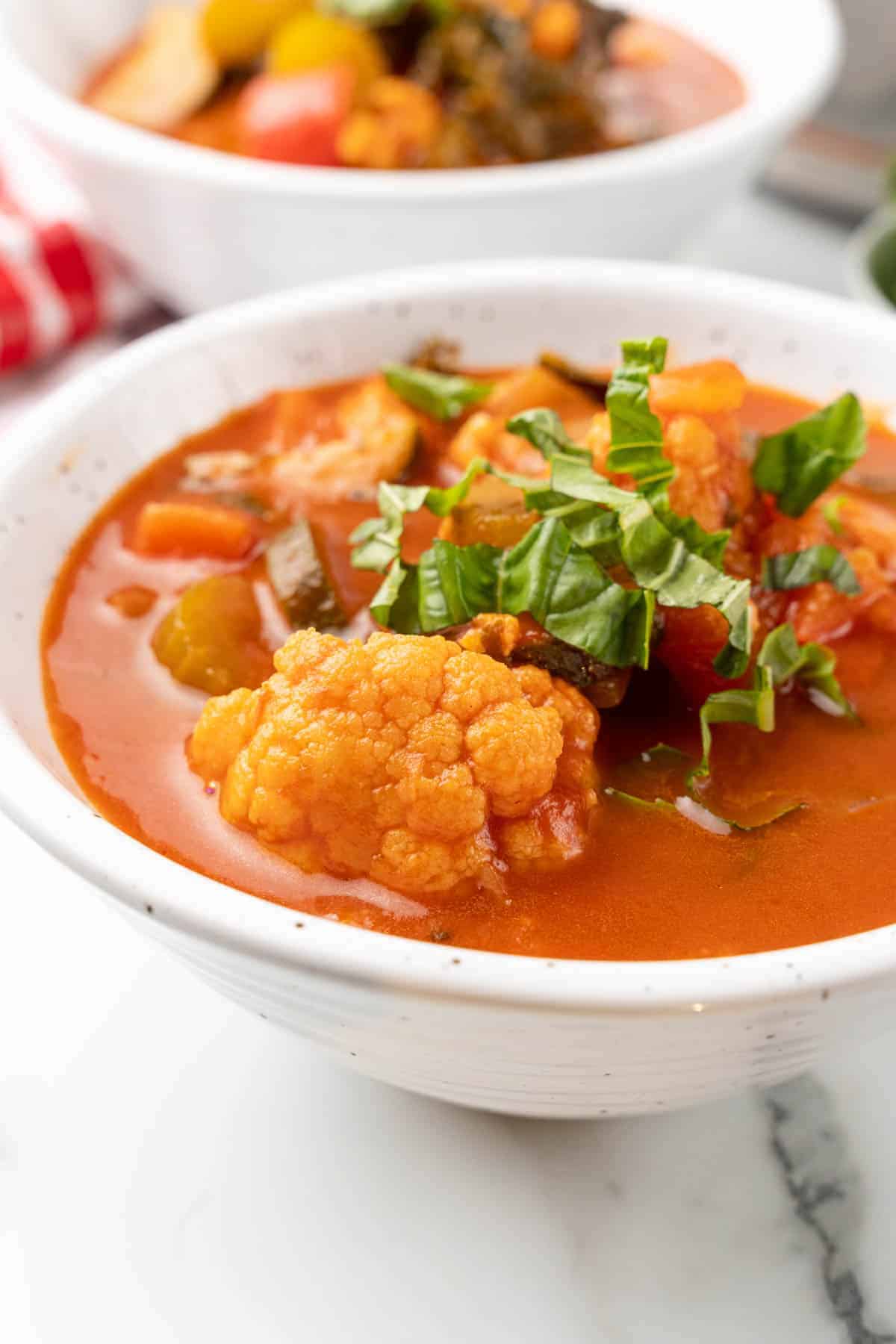
Storage
Soups are a great dish to make in advance so you have meals ready to go throughout the week.
If you meal prep this soup or find yourself with leftovers, store covered in the refrigerator and eat within 4-5 days.
Other vegetable soups and stews
I firmly believe that soup can be enjoyed all year round, not just when it’s cold outside! If you enjoy soups during all seasons, here are a few more vegetable soup recipes I know you’ll love:
- Butternut Squash Posole
- White Bean Lentil Soup (Instant Pot)
- Creamy Cauliflower Soup with Brussels Sprouts
You can also take a look at my roundup of low-carb soup recipes for more inspiration.
When you’ve tried this soup, please don’t forget to let me know how you liked it and rate the recipe in the comments below!
Garden Fresh Vegetable Soup

Ingredients
- 2 tablespoons olive oil
- ½ large onion, (chopped)
- 3 cloves garlic, (minced)
- 2 stalks celery, (diced)
- ¼ teaspoon kosher salt
- garlic pepper
- 28 ounces crushed tomatoes
- 3 cups low-sodium vegetable broth
- 1 small head cauliflower, (separated into bite-sized florets)
- 2 large carrots, (sliced)
- 1 large red bell pepper, (chopped)
- 2 yellow squash, (halved lengthwise, then sliced into half moons)
- 4 stalks of kale, (stems removed and leaves finely chopped)
- ½ cup fresh basil, (chopped)
Instructions
- Heat the oil in a large pot over medium-high heat.2 tablespoons olive oil
- Once the oil is hot, add the onion, garlic, and celery. Cook, stirring occasionally, until the onions begin to look translucent, about 5 minutes. Add salt and garlic pepper, then stir.½ large onion, 3 cloves garlic, 2 stalks celery, ¼ teaspoon kosher salt, garlic pepper
- Add the tomatoes and stock. Stir to incorporate well.28 ounces crushed tomatoes, 3 cups low-sodium vegetable broth
- Add the cauliflower and carrots, bring the mixture to a boil, then reduce the heat and simmer for about 15 minutes, stirring occasionally.1 small head cauliflower, 2 large carrots
- Add the bell pepper, squash, and kale. Bring the mixture back to a boil, reduce the heat, and simmer for another 10 minutes, stirring occasionally.1 large red bell pepper, 2 yellow squash, 4 stalks of kale
- Cook until the vegetables are as soft as you like them, then spoon the soup into four bowls and garnish with fresh basil.½ cup fresh basil




